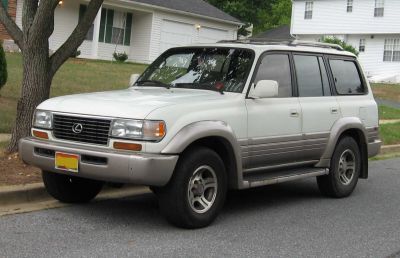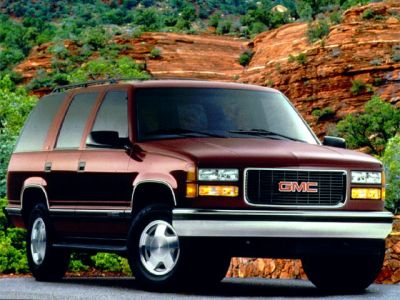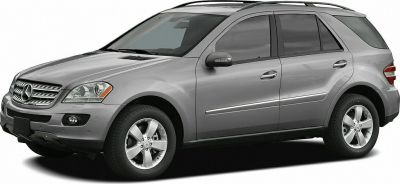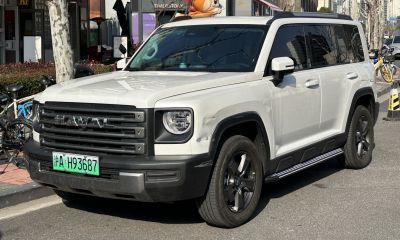 2004 Land Rover Discovery III Dimensions, Size & Specs
2004 Land Rover Discovery III Dimensions, Size & SpecsMeasurements of the 2004 Land Rover Discovery III, engineered for optimal performance and comfort
| Dimensions | |
|---|---|
| Length: | 4835 mm190.4 in15.9 ft |
| Width: | 2009 mm79.1 in6.6 ft |
| Height: | 1887 mm74.3 in6.2 ft |
| Weight Specifications | |
| Curb Weight: | 2494-2536 kg5498-5591 lbs |
| Maximal permitted Weight: | 3230 kg7121 lbs |
| Tire Specifications | |
| Rims Size: |
|
| Tire Size: |
|
The Land Rover Discovery III, produced from 2004 to 2009, is a robust midsize SUV renowned for its blend of off-road capability and refined on-road performance. Measuring 4835 mm (190.4 inches) in length, 2009 mm (79.1 inches) in width, and standing 1887 mm (74.3 inches) tall, the Discovery III presents a commanding presence on the road. Its substantial curb weight ranges between 2494 to 2536 kg (5500 to 5590 lbs), reflecting the solid construction and advanced features that contribute to its durability and safety. The maximum laden weight reaches up to 3230 kg (7122 lbs), allowing the vehicle to carry heavy loads or multiple passengers with ease. The SUV rides on 19-inch rims paired with 255/55 R19 tires, balancing comfort and off-road traction. This generation of the Discovery places emphasis on versatility and ruggedness, suitable for both urban environments and demanding terrains. Its spacious dimensions provide ample interior room, making it a practical choice for families or adventure seekers who require a reliable and capable vehicle. Whether negotiating narrow city streets or challenging trails, the Discovery III maintains a strong stance with its wide track and elevated height, offering excellent visibility and stability. In summary, the Land Rover Discovery III is a well-sized, heavy-duty SUV designed for those seeking a versatile luxury vehicle capable of handling a variety of driving conditions while maintaining comfort and style.
Discover the standout features that make the 2004 Land Rover Discovery III a leader in its class
Have a question? Please check our knowledgebase first.
The Land Rover Discovery III, produced from 2004 to 2009, measures 4835 mm (190.2 inches) in length, 2009 mm (79.1 inches) in width, and stands 1887 mm (74.3 inches) tall. These substantial dimensions contribute to its commanding road presence and spacious interior, making it suitable for both urban driving and off-road adventures.
The Land Rover Discovery III has a curb weight ranging between 2494 kg and 2536 kg (5500 to 5588 lbs), depending on the trim and equipment. Its maximum allowable weight is up to 3230 kg (7121 lbs), which includes passengers, cargo, and towing capacity. This weight range reflects its robust construction, designed to handle off-road terrain and towing demands.
The Land Rover Discovery III is equipped with 19-inch rims, specifically fitted with 255/55 R19 tires. This tire size balances on-road comfort with off-road capability, providing sufficient ground clearance and stability for a mid-sized SUV designed for versatile driving conditions.
While exterior dimensions of 4835 mm in length and 2009 mm in width convey a sizeable footprint, the Discovery III's interior is efficiently designed to optimize passenger space. It commonly offers seating for seven with a flexible three-row configuration, providing ample headroom and legroom. Its tall height of 1887 mm supports a spacious cabin atmosphere, making long journeys comfortable for all occupants.
Fitting the Land Rover Discovery III into a standard garage depends on the garage size. Its height of 1887 mm (74.3 inches) and width of 2009 mm (79.1 inches) means it requires a garage door clearance and internal width above these dimensions. Many typical single-car garages, with door widths around 2400 mm (94.5 inches) and heights near 2000 mm (78.7 inches), can accommodate it, but the fit is snug, especially considering mirror clearance. Users with smaller garages or additional storage should verify the space carefully.
Compared to the Discovery II, the Discovery III increased in size to offer more interior space and improved on-road comfort. The Discovery II was approximately 4506 mm (177.3 inches) long, about 1958 mm (77.1 inches) wide, and around 1920 mm (75.6 inches) tall. The Discovery III is longer at 4835 mm and wider at 2009 mm, though slightly shorter in height at 1887 mm, resulting in a more modern, aerodynamic design and enhanced cabin space, especially benefiting second and third-row passengers.
In the mid-size SUV segment of its production era, the Land Rover Discovery III was notably larger than many competitors. For instance, the Toyota Land Cruiser Prado (2003-2009) measured around 4730 mm in length and 1885 mm in width, making the Discovery III longer and wider. This extra size contributed to increased interior volume and off-road capability. However, it also translated into a heavier vehicle, impacting fuel efficiency. Its larger footprint and robust build distinguished it from more urban-oriented SUVs, appealing to buyers needing rugged performance and spaciousness.
The Land Rover Discovery III's maximum weight rating of 3230 kg (7121 lbs) includes payload and towing capacities. Typically, its maximum towing capacity reaches around 3500 kg (7716 lbs), positioning it as a strong performer for hauling boats, trailers, or caravans. Payload capacity — the weight the vehicle can carry including passengers and cargo — varies with configuration but generally sits around 700-900 kg (1543-1984 lbs). These figures emphasize the Discovery III’s utility orientation alongside its comfortable SUV traits.
Due to its substantial size (4835 mm long, 2009 mm wide) and curb weight ranging between 2494 kg and 2536 kg, the Land Rover Discovery III tends to have moderate fuel efficiency by modern standards. Typically, models with petrol engines average around 14-16 liters per 100 km (approximately 15-17 mpg US), while diesel variants offer slightly better consumption, roughly 10-12 liters per 100 km (20-24 mpg US). Its weight and 4WD systems contribute to higher fuel consumption but provide exceptional off-road capability.
The Land Rover Discovery III introduced significant updates beyond just size. It debuted the integrated body-on-frame chassis with advanced independent air suspension, improving ride comfort and off-road capabilities. The Terrain Response system was also introduced, allowing the driver to adjust vehicle settings based on different terrain types. Interior materials and technology were upgraded, providing better ergonomics, safety features, and infotainment. These advancements established the Discovery III as a luxury 4x4 with versatile performance.
Discover similar sized cars.

| Production: | 1995-1997 |
|---|---|
| Model Year: | 1996 |
| Length: | 4820 mm189.8 in |
| Width: | 1930 mm76.0 in |
| Height: | 1870 mm73.6 in |

| Production: | 1992-1999 |
|---|---|
| Model Year: | 1992 |
| Length: | 4775 mm188.0 in |
| Width: | 1958 mm77.1 in |
| Height: | 1839 mm72.4 in |

| Production: | 2005-2008 |
|---|---|
| Model Year: | 2006 |
| Length: | 4780-4820 mm188.2-189.8 in |
| Width: | 1911-1951 mm75.2-76.8 in |
| Height: | 1815-1863 mm71.5-73.3 in |

| Production: | 2023-present |
|---|---|
| Model Year: | 2024 |
| Length: | 4800 mm189.0 in |
| Width: | 1916-1950 mm75.4-76.8 in |
| Height: | 1822-1843 mm71.7-72.6 in |
